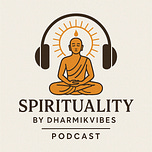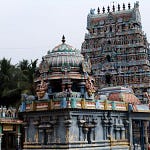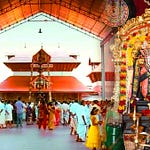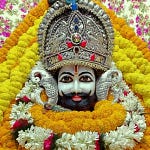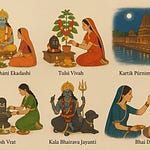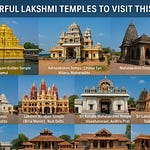The Char Dham Yatra is not merely a pilgrimage—
It is a spiritual odyssey that threads the divine geography of India into a timeless narrative of faith, liberation, and unity.
Spanning the four sacred abodes—Badrinath (North), Dwarka (West), Puri (East), and Rameswaram (South)—this pilgrimage circuit is a sanctified journey that encapsulates the spiritual DNA of Bharat.
✨ A Journey Across Time and Terrain
For centuries, kings, saints, seekers, and everyday devotees have undertaken this sacred route.
Their feet traced trails through forests, mountains, coastal towns, and riverbanks—not to chase comfort, but to touch the divine. The Yatra isn’t about ticking destinations off a list; it’s about awakening the soul, aligning with dharma, and shedding the ego.
🕉️ The Visionary Behind the Yatra: Adi Shankaracharya
In the 8th century, Adi Shankaracharya, the Advaita Vedanta master from Kerala, envisioned the Char Dham as more than travel—it was a call for national and spiritual unification.
He established four mathas (monasteries)—each aligned with a Veda and Mahavakya:
Jyotirmath (North)
Puri (East)
Sringeri (South)
Dwarka (West)
These centers became the cosmic axis of Hindu consciousness, and the Char Dham Yatra became its living thread.
🗺️ The Sacred Mandala of India
These abodes mirror the energy centers of the cosmos:
Badrinath represents the head—the seat of meditative stillness.
Dwarka reflects the heart—devotion and detachment by the sea.
Puri symbolizes universal compassion and social harmony.
Rameswaram grounds the seeker in action, humility, and surrender.
🚶♂️ From Barefoot Journeys to Digital Darshans
In ancient times, the pilgrimage demanded silence, austerity, and faith. Pilgrims walked barefoot, bathed in holy rivers, and lived on alms. The Yatra was a tapasya—not a tour.
Today, while infrastructure, travel, and technology have made it easier, the spiritual essence remains intact.
📍 Northern Dham: Badrinath – Vishnu's Himalayan Abode
Perched in the Garhwal Himalayas, Badrinath is where Nar and Narayan meditated, and Vishnu himself found peace. The Pandavas also passed through here on their final journey to heaven.
Highlights:
Alaknanda River
Tapta Kund hot spring
Mana Village – the last Indian village before Tibet
Festivals like Badri-Kedar Utsav and Mata Murti Ka Mela
The temple’s black stone idol, colorful wooden façade, and mountain backdrop are pure divinity sculpted in stone.
📍 Western Dham: Dwarka – Krishna’s Royal City by the Sea
Legend tells us that Krishna built Dwarka after leaving Mathura—a golden city that was eventually swallowed by the sea.
Recent marine archaeology has uncovered submerged structures that corroborate ancient texts.
Key sites:
Dwarkadhish Temple (Chalukya style)
Bet Dwarka – where Krishna met Sudama
Rukmini Temple and Gomti Ghat
Janmashtami is celebrated here with great grandeur, drawing lakhs of devotees.
📍 Eastern Dham: Puri – The Mysterious World of Jagannath
Puri is the home of Lord Jagannath, a deity whose form blends tribal roots with Vedic tradition.
The temple is a marvel:
No shadow ever falls on its dome
The flag atop the temple defies the wind
Its Ananda Bazaar kitchen feeds thousands daily from a single fire
The grand Rath Yatra, where Jagannath, Balabhadra, and Subhadra ride in massive chariots, symbolizes the soul’s journey through impermanence.
📍 Southern Dham: Rameswaram – The Grace of Shiva and Rama
This is where Rama worshipped Shiva before crossing to Lanka. It is home to the Ramanathaswamy Temple, one of the 12 jyotirlingas.
Inside the temple:
The longest temple corridor in India
22 sacred wells (tirthas) where pilgrims bathe
Dhanushkodi, a ghost town at land’s end, marking the start of Rama Setu
Festivals like Maha Shivratri and Aani Tirumanjanam echo through this spiritual southern sanctuary.
🌺 The Cultural Tapestry of the Yatra
The Char Dhams have inspired:
Classical music and dance
Architectural styles
Philosophical treatises
Bhakti and Advaita traditions
Social reform movements
They continue to be living spaces of transformation, where ancient values meet modern seekers.
💠 Why It Still Matters in the Modern Age
The Yatra is no longer just a physical endeavor. It’s a soul map.
The Himalayas teach stillness.
The sea whispers surrender.
The chariot moves you toward detachment.
The lingam calls for penance and balance.
With the Char Dham Highway Project, online darshans, and spiritual apps, the divine is now digitally reachable—but the inner journey remains just as profound.
The Char Dham Yatra is a conversation between the soul and the cosmos.
It is the call of Bharat—not just to see its sacred sites, but to feel, reflect, and transform.
🕊️ May every step be a prayer,
and every prayer, a path toward your true Self.
Om Namo Narayanaya | Jai Jagannath | Har Har Mahadev | Jai Dwarkadhish

